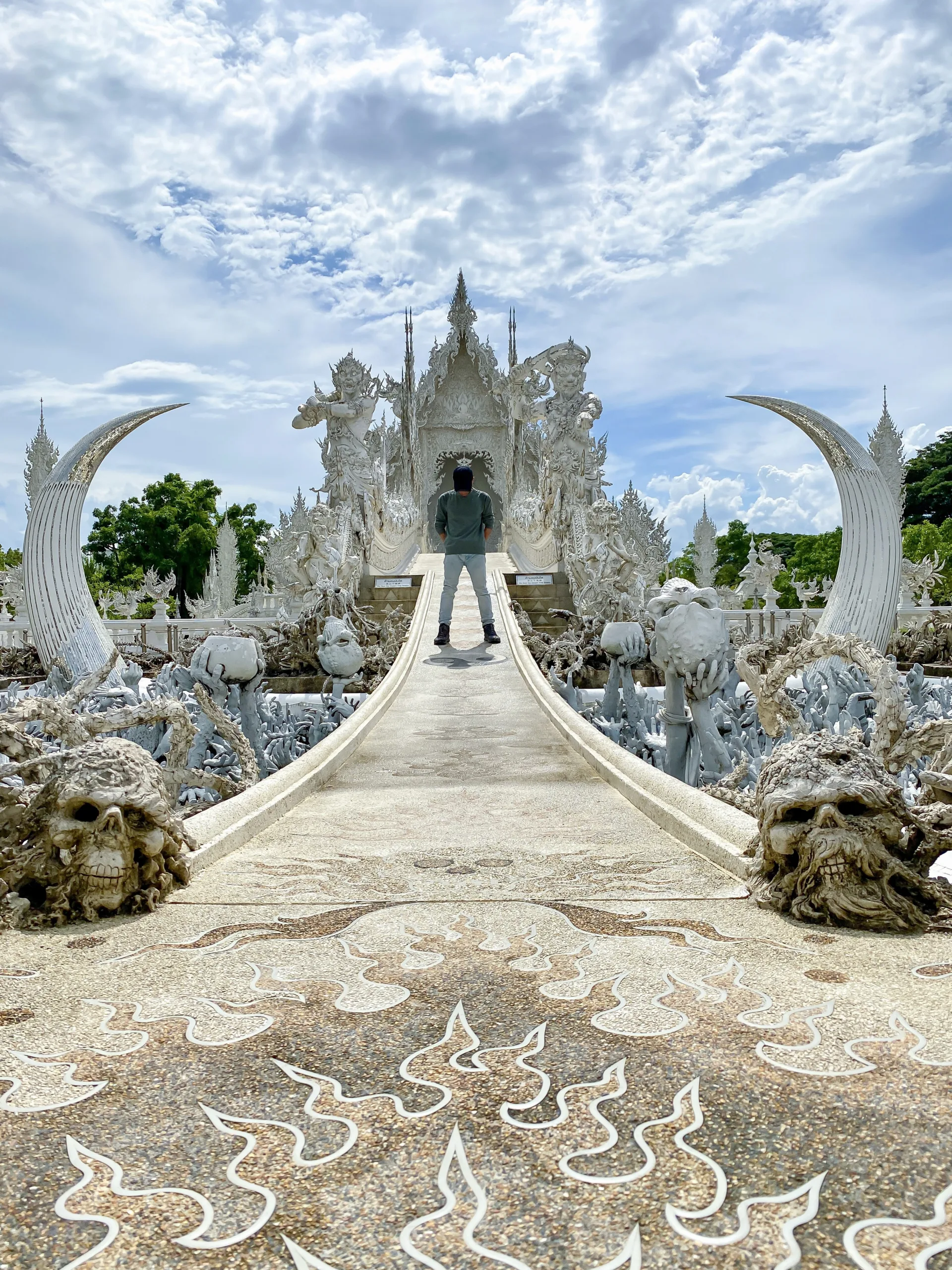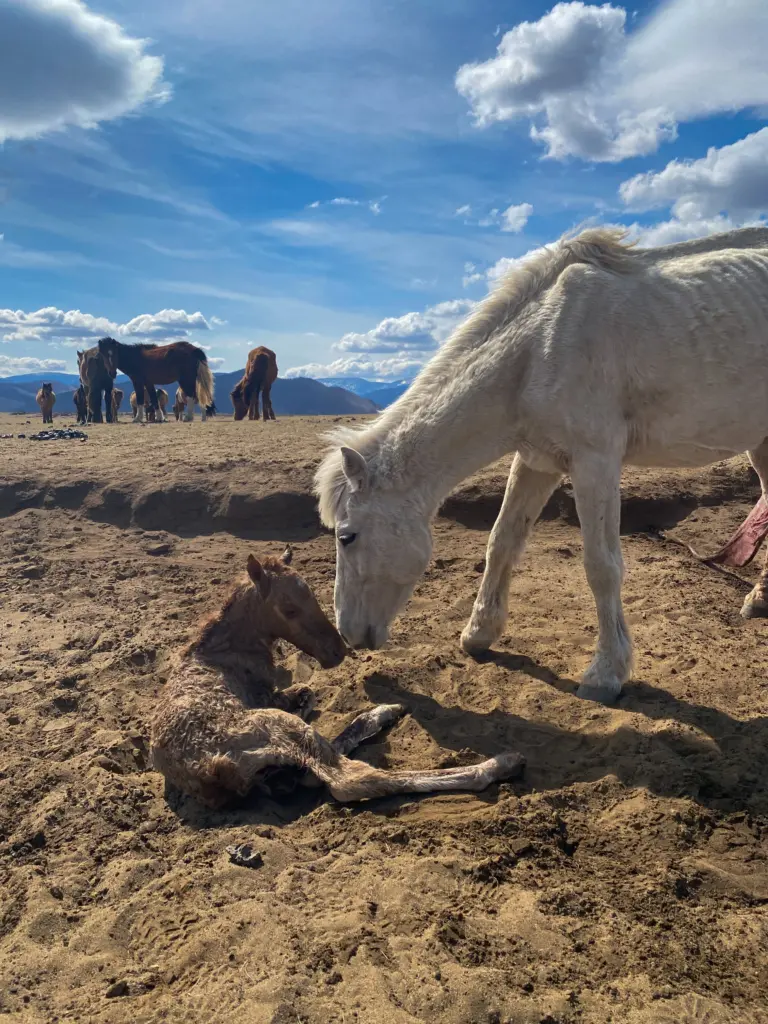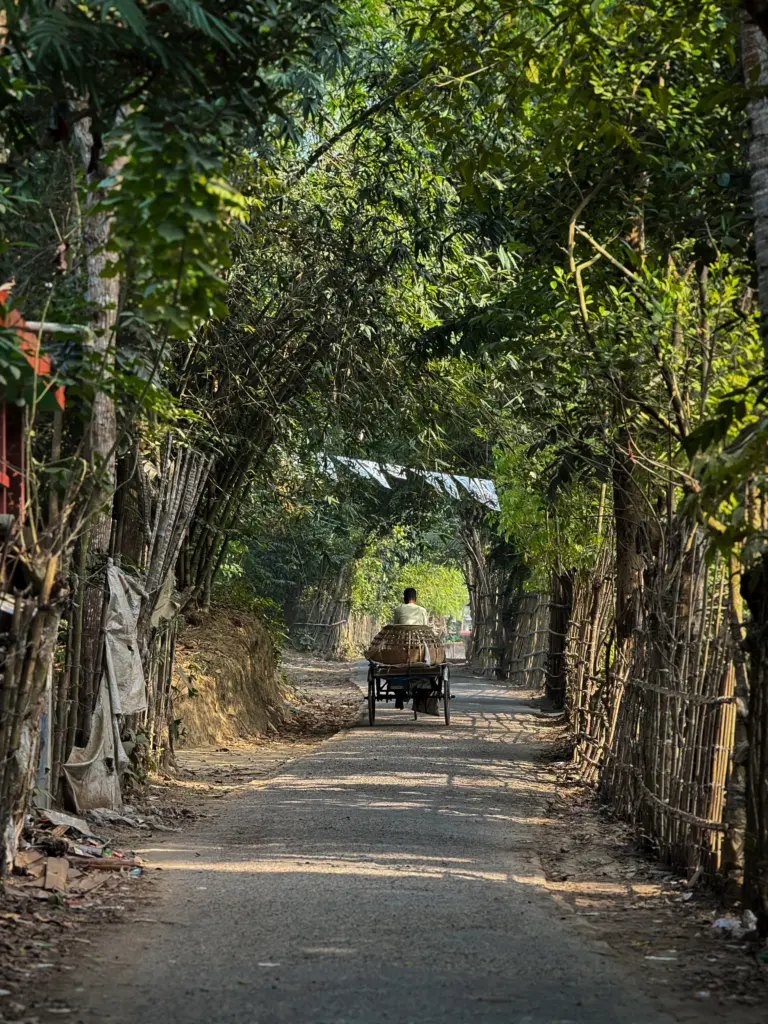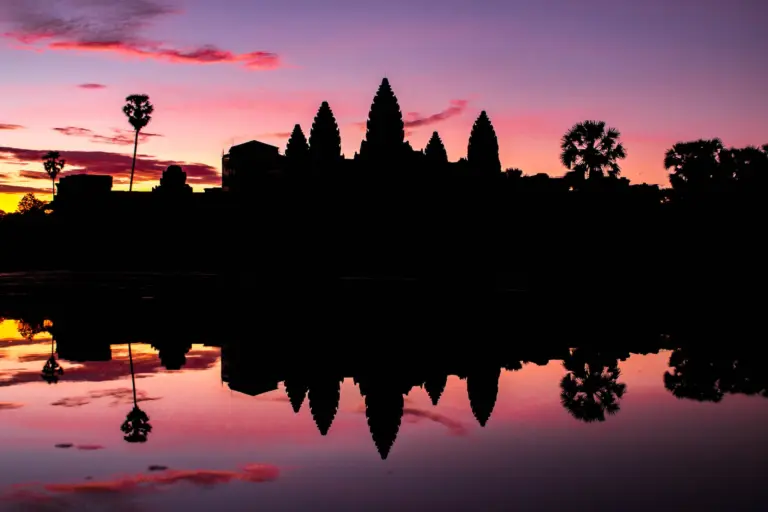Are you ready to embark on a cycling journey around Kyoto?
I got you.
This cycling itinerary will give you a one-of-a-kind exploration of Kyoto’s most iconic sites, all while being caressed by the cool breezes of its two significant rivers: the Kamo River and the Katsura River.
As you pedal beside Kamo River’s gently flowing waters, you’ll be treated to a picturesque view of Kyoto’s eastern mountains and an array of charming riverside cafes. This path is akin to a journey through the heart of Kyoto, where every turn of your wheel reveals a new slice of the city’s soul.
Eventually, your trip takes you towards the Katsura River, leading you back towards Kyoto Station. But not after visiting the numerous shrines and natural wonders along the way!
The fusion of nature, history, and spirituality makes for an unforgettable ride. So, hop on a bike and get ready to see Kyoto like never before – from the saddle, with the wind in your hair and the city’s beauty unfolding before your very eyes.
Table of Contents
Toggle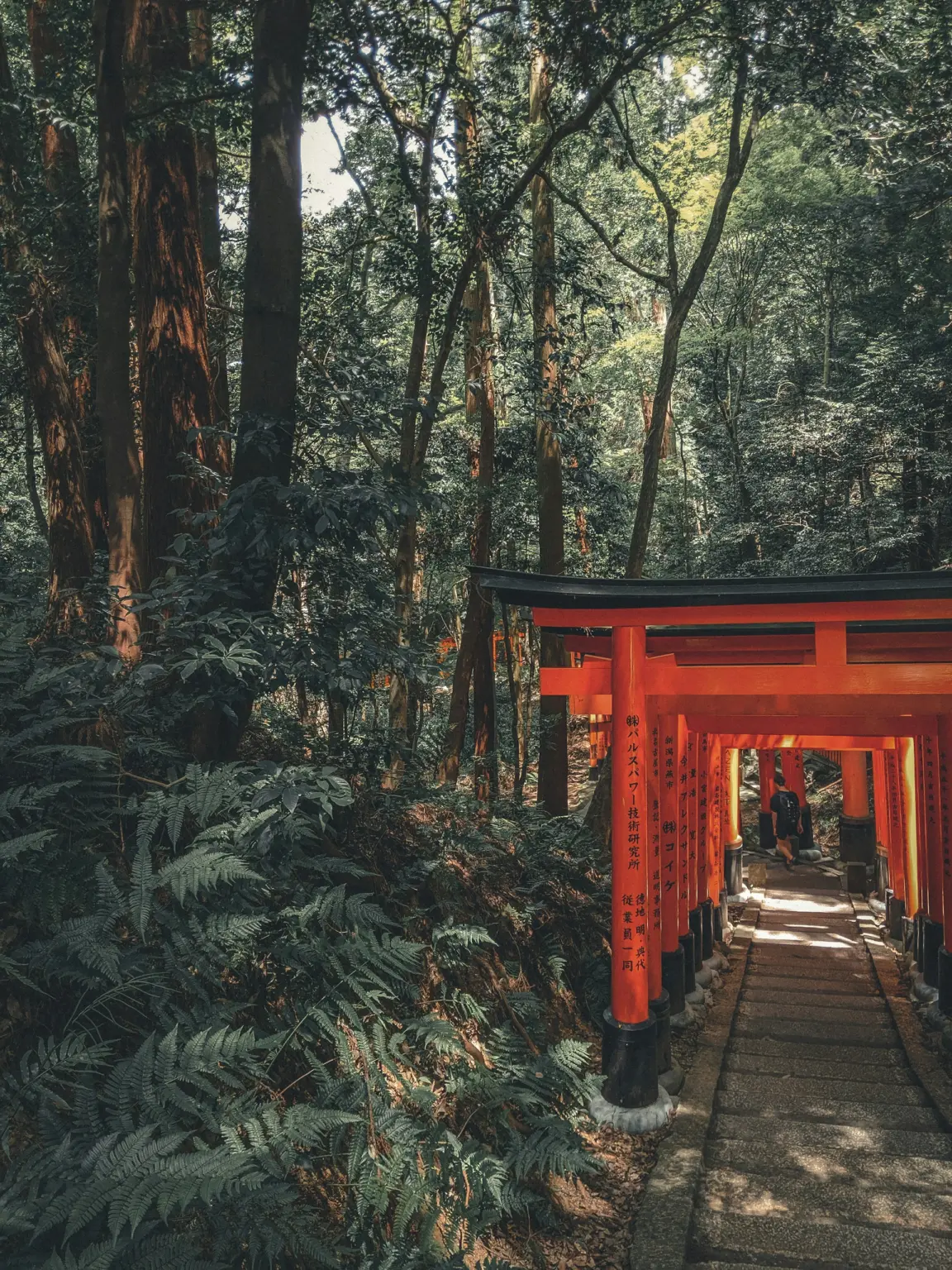
What to Know About Kyoto
Kyoto, once the capital of Japan for over a thousand years until 1868, is a place steeped in history. This enchanting city is a living museum, boasting 17 UNESCO World Heritage Sites!
Amidst classical Buddhist temples, Shinto shrines, and traditional wooden houses. The city is a repository of Japan’s heritage, with over 2,000 religious sites including the renowned Kinkaku-ji and the serene Kiyomizu-dera.
The charm of Kyoto extends beyond its architecture. It’s a city synonymous with cultural traditions, from the artistry of geishas in the Gion district to the simple yet profound act of a tea ceremony tell stories of a culture steeped in aesthetics.
Above all, Kyoto’s enduring appeal lies in its ability to make you feel part of its story – a story that continues to unfold, just like the petals of its cherry blossoms each spring.
A truly timeless city.

Where to Rent Bikes in Kyoto
While you can find plenty of Bike Rentals near and around Kyoto Station, the one we went with was Kyoto Eco Trip. They have two stores but I recommend the flagship store which is nearer to the station and makes for a good place to start the cycling route.
Personally, we went with the e-bike just because we were more focused on seeing as much as we can as opposed to getting a workout and the added boost in speed and ease in pedalling uphill helped a lot in achieving our goals for the day.
Website: Kyoto Eco Trip
Cost: 1,000 JPY – 2,400 JPY depending on the type of bike.
Opening Hours: 6:30 AM – 10:00 PM (6:30 AM – 8:30 AM are considered early hours and will have a surcharge of 300 JPY, conversely 6:01 PM – 10:00 PM are considered late hours for returning and have a surchage of 400 JPY.
Google Map: Kyoto Eco Trip Flagship Store
The Kyoto Cycling Course
This cycling course starts in Kyoto Station or the Kyoto Eco Trip Flagship Store. From there, you’ll make your way east towards Kamo River where you can follow along its banks towards the various sites that dot its side, upon visiting the site of your choice, you can then go back and cycle by the river again.
It’s pretty straightforward and you get to avoid all the crisscrossing and roadside traffic and just enjoy the beautiful views and activities happening around the riverbanks.
Note that it is not possible to visit all the sites on this list, but I have listed them for the sake of convenience as everyone would have different priorities and preferences. The key here is to start as early as possible (Kyoto Eco Trip opens at 6:30 AM) to get the most of your cycling day.
For the sake of this guide, I will be focusing more on the route we took as it is proven to be achievable and the one I am most familiar with, though I will be also noting the optional places to stop by so you have more choices.
The route we took was the following: Gion, Yasaka Jinja, Kyoto Imperial Palace, Daitoku-ji, Hirosawa Pond, Osawa Pond, Daikaku-ji, Arashiyama and then following the Katsura River down before making a left towards Kyoto Station.
The reason we didn’t visit the other famous spots is because we had several days in Kyoto and we had already visited some of the other sites such as Fushimi Inari Taisha, Kiyomizu Dera and Kinkaku-ji.
If you choose to visit the bigger sites like Fushimi Inari Taisha, it would be prudent to adjust your itinerary accordingly as you’ll end up spending more than an hour or so when exploring such a place, making it difficult to visit the other sites.
Now without further ado, the Kyoto Cycling Course:
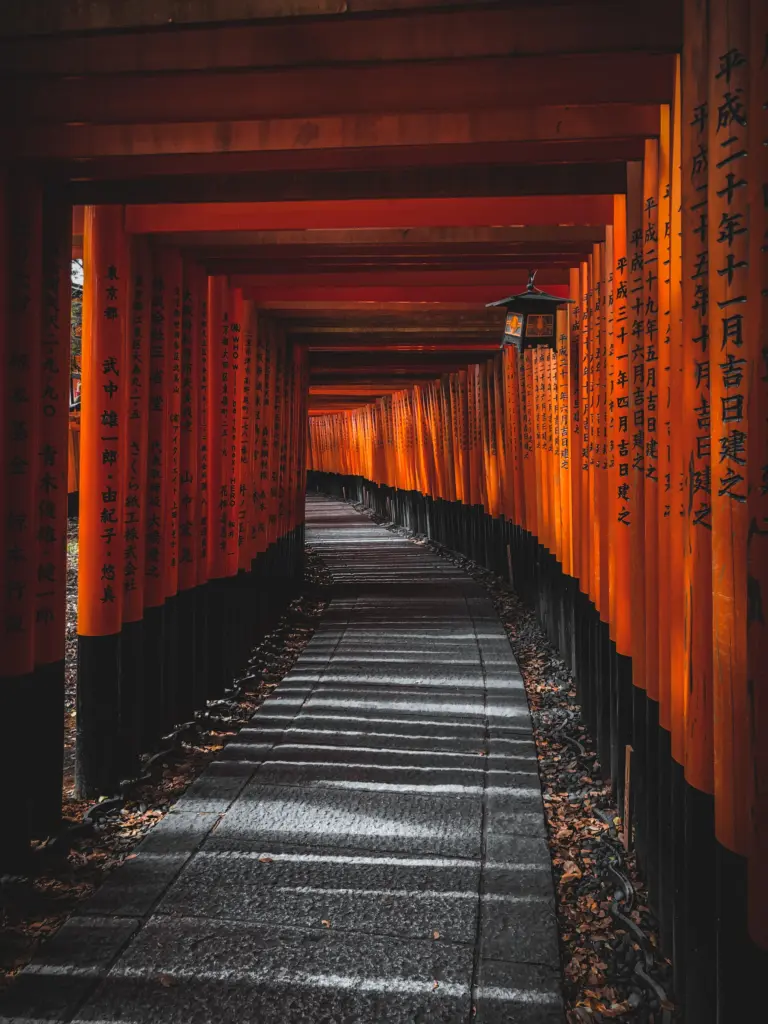
1. Fushimi Inari Taisha
Of course, it can’t be Kyoto without mentioning Fushimi Inari Taisha. As mentioned before this first spot is optional as it will take a huge chunk of your time but if it’s your first time visiting Kyoto, then this is a must visit site.
This renowned shrine is celebrated for its thousands of vermilion torii gates, which create a striking path up the mountain behind the main shrine complex.
Fushimi Inari is dedicated to Inari, the Shinto god of rice, and has been a place of worship since before the capital moved to Kyoto in 794. The torii gates, donated by individuals and businesses seeking blessings, create tunnel-like pathways that wind through the forest, offering a mesmerizing experience as you pass through them.
The pathway through the gates, known as Senbon Torii (thousands of torii gates), leads to several smaller shrines scattered along the hike up the sacred Mt. Inari, which stands at 233 m (764 ft).

2. Kiyomizu Dera
Next up is another optional place to stop-by, Kiyomizu-dera, a celebrated Mahayana Buddhist temple. If you are just visiting this temple and not the surrounding Ninenzaka and Sannenzaka then perhaps it is quite possible to include this in the itinerary, otherwise adjust accordingly as both areas are magnificent and would require some time to truly appreciate.
This temple, whose name translates to “Pure Water Temple,” is one of Kyoto’s most iconic and historic sites, founded in the late 8th century and part of the Historic Monuments of Ancient Kyoto UNESCO World Heritage site.
Perched on the side of Mt. Otowa, Kiyomizu-dera is famous for its wooden stage that juts out from the main hall, 13 m (42 ft) above the hillside below.
The temple is associated with the Kannon Bodhisattva, a deity of mercy and compassion. The waters of the Otowa Waterfall, located at the base of the temple, are divided into three streams and are believed to have wish-granting powers.
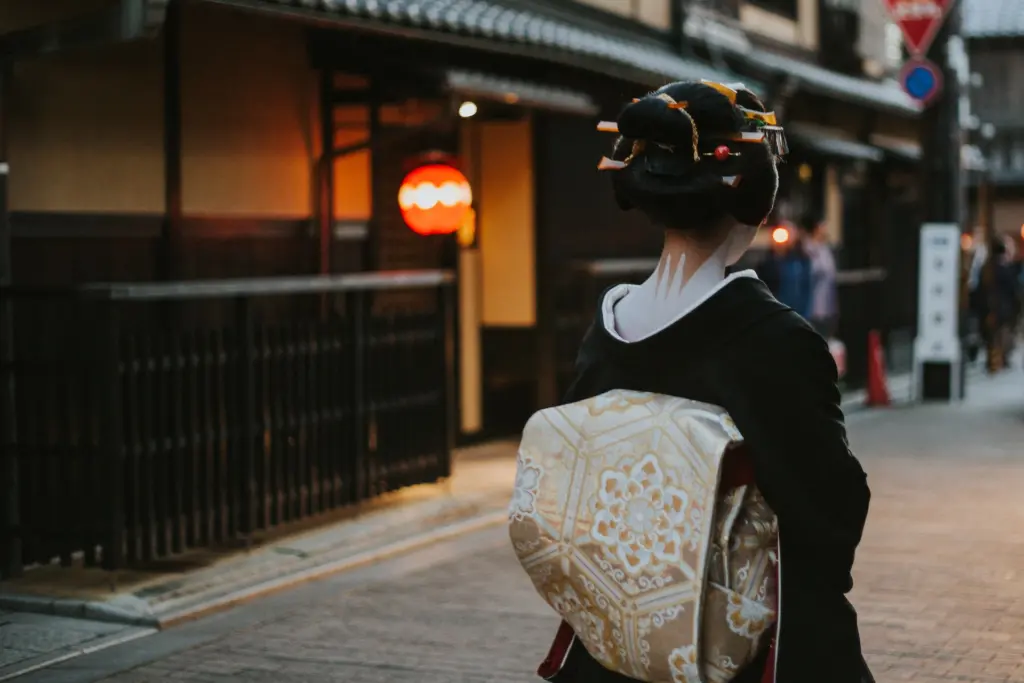
3. Gion
The next stop is Gion, the city’s most famous geisha district. This area, with its well-preserved traditional architecture and old-world charm, provides a stark contrast to the natural landscapes you’ve encountered so far.
Park your bike (we usually just put them by the river banks, under the bridges where everyone else parks their bikes) and head up to explore this exquisite neighborhood.
Gion is renowned for its beautifully preserved machiya houses, which line the narrow lanes. These wooden townhouses, with their characteristic lattice fronts, have been the center of geisha culture since the Edo period.

4. Yasaka Jinja
As you continue exploring Gion on foot, you’ll find yourself at the gates of Yasaka Jinja. Nestled at the eastern end of the Gion district, this Shinto shrine is a prominent cultural landmark in the city.
With its history dating back to the 7th century, the shrine is dedicated to Susanoo-no-Mikoto, the Shinto deity of sea and storms, and his family. The sprawling grounds of Yasaka Jinja are dotted with several smaller auxiliary shrines and halls.

5. Kyoto Imperial Palace
Located in the spacious Kyoto Imperial Park, the Kyoto Imperial Palace was once the residence of Japan’s Imperial Family, before the emperor moved to Tokyo in 1869.
As you cycle towards the palace, you’ll notice the vastness of the surrounding park, a green oasis in the midst of the city. I must warn you to be careful here as the gravel roads made us both slip. It’s not the most bike-friendly ground. Another thing to note is the opening times, it’s closed on Monday and Tuesday and after 3:20 PM.
Unfortunately, it was closed when we visited but the surrounding gardens were quite beautiful nevertheless and it was still worth it.
The palace complex includes several buildings. The main hall, known as the Shishinden, is particularly impressive with its traditional design and is used for significant imperial ceremonies.
The simplicity and elegance of the palace architecture, set against the backdrop of meticulously maintained gardens, offer a glimpse into the aesthetic sensibilities of Japan’s imperial past.
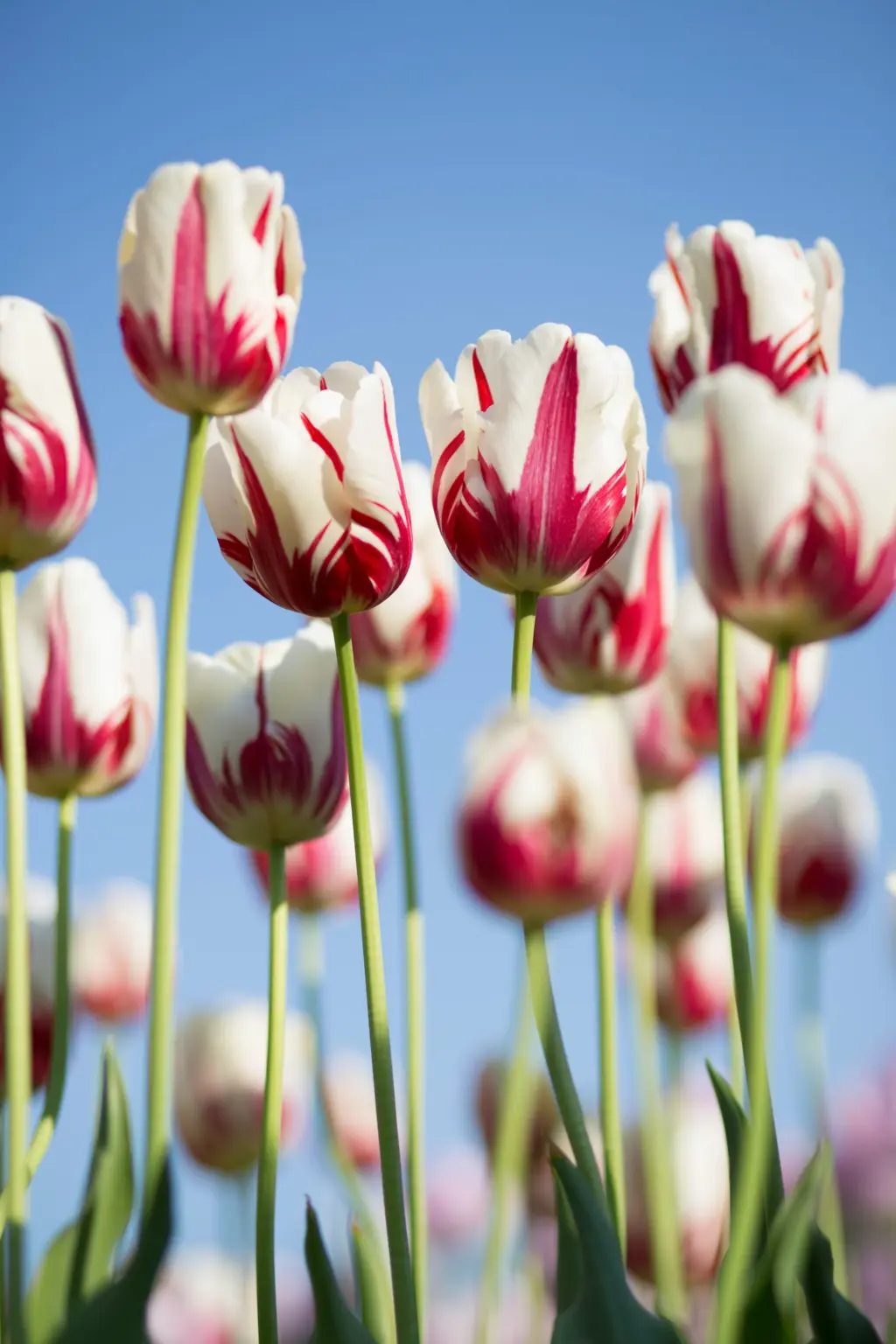
6. Kyoto Botanical gardens
The Kyoto Botanical Gardens, established in 1924, are among the oldest and most comprehensive botanical gardens in Japan. Covering about 24 hectares, the gardens house over 12,000 species of plants!
The gardens are divided into different sections, each dedicated to a specific gardening style. The conservatory, a large greenhouse in the center of the gardens, is a highlight.
I had wanted to visit this place but my friend wasn’t too interested so we skipped out on this one. It was also around this time where we had lunch.

7. Daitoku-ji
Continue on to Daitoku-ji, a prominent Zen Buddhist temple complex and off-the-beaten-path.
Daitoku-ji, founded in the early 14th century, is a sprawling complex that consists of the main temple and numerous sub-temples. The temple serves as an important center of Rinzai Zen, a sect of Zen Buddhism.
The temple grounds reflect the Zen principles of harmony, respect, purity, and tranquility. The carefully raked gravel gardens and thoughtfully placed stones are not just visually appealing; they are also meant to evoke contemplation which is exactly what you should do while you’re here!

8. Kinkaku-ji
Your cycling tour in Kyoto leads you next to Kinkaku-ji, also known as the Golden Pavilion, one of the visually stunning landmarks in the city.
This Zen Buddhist temple is renowned for its top two floors, which are completely covered in gold leaf, shimmering brilliantly against the backdrop of the surrounding gardens and reflecting elegantly in the pond before it.
Kinkaku-ji’s history dates back to the late 14th century, originally serving as a villa for a shogun before being converted into a Zen temple. The temple, however, has not been without turmoil; it was burned down several times throughout its history, including a notable incident in 1950 when it was set on fire by a novice monk. The structure standing today is a faithful reconstruction completed in 1955, continuing to embody the lavish tastes and extravagant architecture of the period in which it was first built.
While we skipped out on this one as we have already seen it before, you can easily fit this one in as Kinkaku-ji’s grounds are actually pretty small. It can easily be finished in 5 – 10 minutes.

9. Hirosawa Pond
Located in the western part of the city, near the famous Arashiyama district, this large, tranquil pond is a hidden gem and one that I really wanted to check out. It’s a great respite after going through all the farmlands, forests, and mountains.
Hirosawa Pond is known for its natural beauty and peaceful atmosphere. Surrounded by lush greenery, it reflects the changing seasons of Kyoto in a quiet, understated manner.
Historically, Hirosawa Pond has been a favored spot for moon-viewing parties, known as “Tsukimi” in Japanese culture. Its wide, open surface provides a perfect mirror for the moon, making it a poetic destination for such occasions.

10. Osawa Pond
As you make your way towards Arashiyama, there’s another pond known as Osawa Pond that offers another opportunity to connect with the city’s serene natural landscapes.
Osawa Pond is very near the Daikaku-ji Temple which is the next stop after. It’s also one of the oldest artificial ponds in Japan.
This expansive pond was created in the Heian period and is a part of the old imperial villa that later became Daikaku-ji Temple which brings us to the next site.

11. Daikaku-ji
After Osawa Pond, you’ll find yourself at the gates of Daikaku-ji, once an imperial villa before being converted into a Buddhist temple.
Daikaku-ji’s origins trace back to the early Heian period, and it has played various roles throughout its history, including serving as a residence for emperors.
One of the standout features of Daikaku-ji is the Shinden, the main hall, which was originally the living quarters of Emperor Saga.
The temple has been a center for Shingon Buddhism, a major school of Japanese Buddhism, and over the centuries, it has played a role in the development of various Japanese cultural practices, including poetry and art.

12. Arashiyama
The cycling route culminates in the enchanting district of Arashiyama, now you’ve traveled from the east side all the way to the west side of Kyoto.
As you ride into Arashiyama, you are immediately greeted by its lush greenery and tranquil atmosphere. The area is particularly famous for the Arashiyama Bamboo Grove, though it’s going to very crowded at this time. I recommend to cycle around the surrounding areas instead which brings you through beautiful ponds and gardens.
Another highlight of Arashiyama is the Togetsukyo Bridge, a historic and iconic bridge that spans the Katsura River. The bridge, with its backdrop of forested mountains, especially the Arashiyama mountains, offers a picturesque view that epitomizes the beauty of traditional Japanese landscapes. This is where we took a long rest and appreciating the wonderful day before heading back.

13. Tenryu-ji
Since you’re already in Arashiyama, a visit to Tenryu-ji is a must. This historic temple is both a designated UNESCO World Heritage Site and a masterpiece of Zen Buddhist architecture.
Tenryu-ji, which means “Dragon of the Sky Temple,” was established in 1339 and is the head temple of the Tenryu branch of Rinzai Zen Buddhism. Its founding is deeply intertwined with the history of the Ashikaga shogunate, one of the most significant ruling clans in Japanese history.
The temple has endured many fires over the centuries and has been rebuilt several times, yet it remains a powerful symbol of the Zen Buddhist tradition.
Designed by the famous garden designer Muso Soseki, the garden is a perfect embodiment of shakkei, or “borrowed landscape,” where the surrounding Arashiyama mountains are seamlessly integrated into the garden’s composition. This creates a stunning visual harmony between the garden and the natural landscape.
The Sogenchi Garden, a pond garden within the temple, is particularly notable for its aesthetic beauty and tranquil ambience. It’s an ideal spot for meditation if you have the time.
After you’re finished with the day, follow Katsura River downstream and head on back towards your chosen rental shop to return the bike or to Kyoto station.
Where to Stay in Kyoto
Kyoto is an excellent city to make a home base in as you explore the surrounding areas of Kansai. Its proximity to areas such as Osaka, Nara, Hiroshima, and Tottori gives you plenty of choices for day excursions.
And besides, who wouldn’t love the experience of staying a couple of nights at Japan’s cultural and historic hub?
Here are some of the best recommended places to stay in Kyoto:
Best Hotels in Kyoto:
- Asai Kyoto Shijo – offers comfortable, air-conditioned accommodation with complimentary WiFi and additional amenities including a restaurant and a bar. With a range of services such as a 24-hour front desk, luggage storage, and currency exchange facilities. Each room in the hotel is well-furnished, featuring a TV with satellite channels, a safety deposit box, and a desk.
- Dusit Thani Kyoto – provides a range of facilities including air-conditioned rooms, a fitness center, complimentary WiFi, and a serene garden. This property also boasts a restaurant, a bar, and additional leisure amenities like an indoor pool and a sauna. Enjoy convenient services such as room service, a 24-hour front desk, and currency exchange facilities.
- La’gent Hotel Kyoto Nijo – offers a perfect blend of comfort and convenience with its restaurant, free WiFi, and a spa & wellness center. The hotel is family-friendly and provides essential services like luggage storage. You can enjoy well-equipped, air-conditioned rooms with amenities including a desk, electric tea pot, fridge, safety deposit box, flat-screen TV, and a private bathroom with a bidet. Shared bathroom facilities are also available, complete with showers, free toiletries, and hairdryers. Additionally, the hotel staff is multilingual, speaking English, French, Japanese, and Korean.
Best Hostels in Kyoto:
- Guest House Ga-Jyun Kyoto – set in a traditional Japanese house with five rooms, making it an ideal starting point for exploring the city. The nearby Higashiyama Subway Station provides easy city-wide access. The guesthouse offers both dormitory and private non-smoking rooms, along with amenities like free Wi-Fi, coin laundry, luggage storage, a massage chair, and a safety deposit box. A complimentary breakfast is served daily, and additional facilities include common use bathrooms and a curfew with passcode entry. The guesthouse is also home to a dog named Jiro.
- Kyoto Hana Hostel – offers a comfortable and convenient stay with an array of complimentary amenities like soap, shampoo, hair dryers, and laundry necessities. It features both private and dormitory-style rooms, each equipped with privacy-enhancing features such as curtains, reading lights, and power sockets. Private rooms showcase traditional Japanese aesthetics with tatami mats and futon bedding, and some include private bathrooms. Additional free services include Wi-Fi, computer access, and maps, while facilities like washing machines, dryers, and bicycle rentals are available for a nominal fee.
- The Millennials Kyoto – redefines lodging with its high-tech, multi-functional sleeping pods, all controllable via an iPod provided at check-in. This innovative hotel transcends traditional accommodation concepts, focusing on a unique social experience. It features a generous 300 square meter of common areas, constituting 20% of the hotel’s space, which includes a working lounge, kitchen, play zone, dining area, and a 24-hour accessible bar.
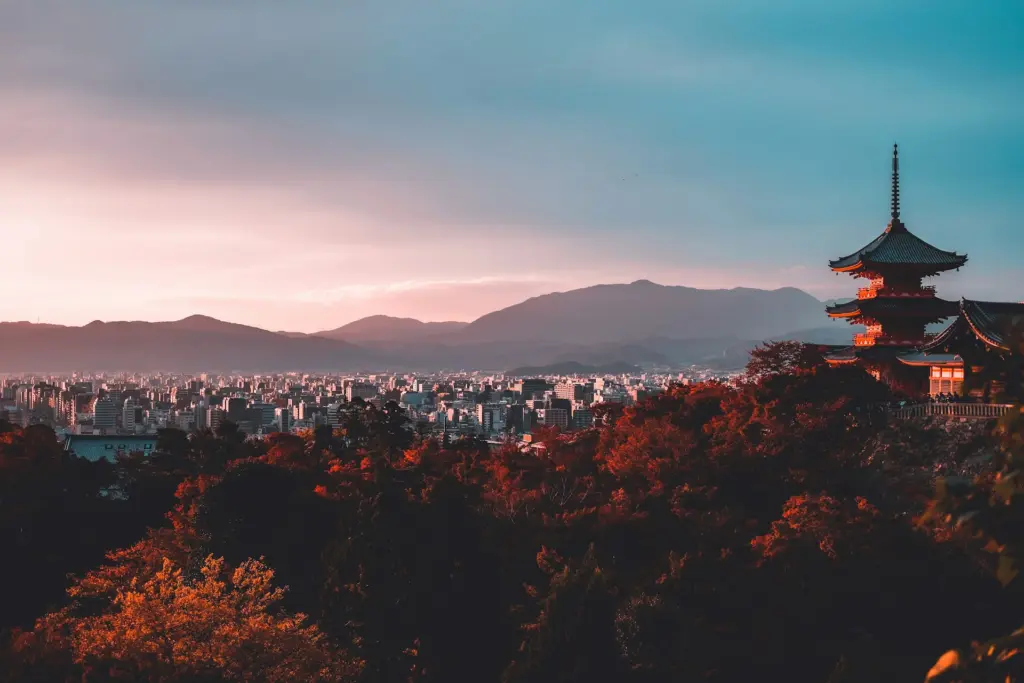
Best Time to Visit Kyoto
The best time to visit Kyoto is during the Spring (late March to May) and Autumn (October to November) seasons.
Spring in Kyoto is famously beautiful, particularly for the cherry blossom season in early April. The city is adorned in delicate shades of pink, and the atmosphere is festive. Temperatures during spring are comfortable, typically ranging from 10°C – 20°C (50°F – 68°F).
Autumn in Kyoto is equally enchanting, with the changing colors of the leaves. The city transforms into a vibrant palette of reds, oranges, and yellows, especially in places like Arashiyama and the many temples and gardens. Autumn temperatures are also pleasant, ranging from 15°C – 25°C (59°F – 77°F).
We were actually there during summer around September, it wasn’t that hot all things considered and biking by the river and feeling the breeze still proved to be one of the most memorable parts of this biking adventure.

How to Get to Kyoto
Getting to Kyoto is straightforward due to its well-connected transportation network. Here’s how you can reach Kyoto from major cities in Japan:
From Tokyo:
- By Train: The Shinkansen (bullet train) is the fastest and most convenient way to travel from Tokyo to Kyoto. The journey takes about 2 to 2.5 hours on the Nozomi, the fastest Shinkansen service. The Hikari and Kodama services also run on this route but take a bit longer.
- By Air: You can fly from Tokyo to Osaka (Itami or Kansai International Airport) and then take a train or bus to Kyoto. The flight takes about 1 hour, and the subsequent train or bus journey to Kyoto takes an additional 1 to 1.5 hours.
- By Night Bus: For a more economical option, night buses from Tokyo to Kyoto are available. These buses often feature comfortable seating and amenities, making the overnight journey (about 7 to 9 hours) convenient and budget-friendly. This is actually how we went to Kyoto.
From Osaka:
- By Train: The JR Tokaido Line (including rapid and local trains) and the Hankyu Kyoto Line both offer services from Osaka to Kyoto. The journey takes about 30 minutes to an hour, depending on the type of service you choose.
From Kansai International Airport (KIX):
- By Train: The JR Haruka Express and the Kansai Airport Rapid services connect Kansai International Airport to Kyoto Station. The journey takes about 75 minutes.
- By Bus: Airport limousine buses run directly from Kansai International Airport to Kyoto Station. The journey takes about 90 minutes.
Plan Your Trip to Kyoto | Best Travel Resources
Book Your Accommodations
- Booking.com – the world’s leading online booking platform for accomodations around the world, they have an extensive amount of available listings with zero booking fees and best price guarantees.
- Hostelworld – a backpacker’s best friend, Hostelworld has the largest collection of hostels and guesthouses for affordable prices.
Don’t Forget Insurance
- SafetyWing – from Nomad Insurance, an insurance by nomads for nomads. They understand our lifestyle well and have really comprehensive and flexible plans that cater to any traveler.
Find Cheap Flights
- Kiwi.com – my go-to for booking and finding the cheapest flights and it’s helped me save tons of money. They do virtual interlining which is connecting flights from airlines that do not codeshare, so you can find routes that you wouldn’t be able to find normally.
Join Tours & Activities
- GetYourGuide – is one of the best places to find unique tours and activities. I found that it’s an excellent way to meet fellow travelers and create fond memories. They are not only limited to tours as they also offer niche services such as skip-the-line tickets or private transfers.
Catch a Ride
- Rentalcars.com – nothing beats the freedom of the road, Rentalcars.com is the world’s largest online car rental service. They operate across 160 countries so they’re the perfect partner to work with if you find yourself wanting a ride.

